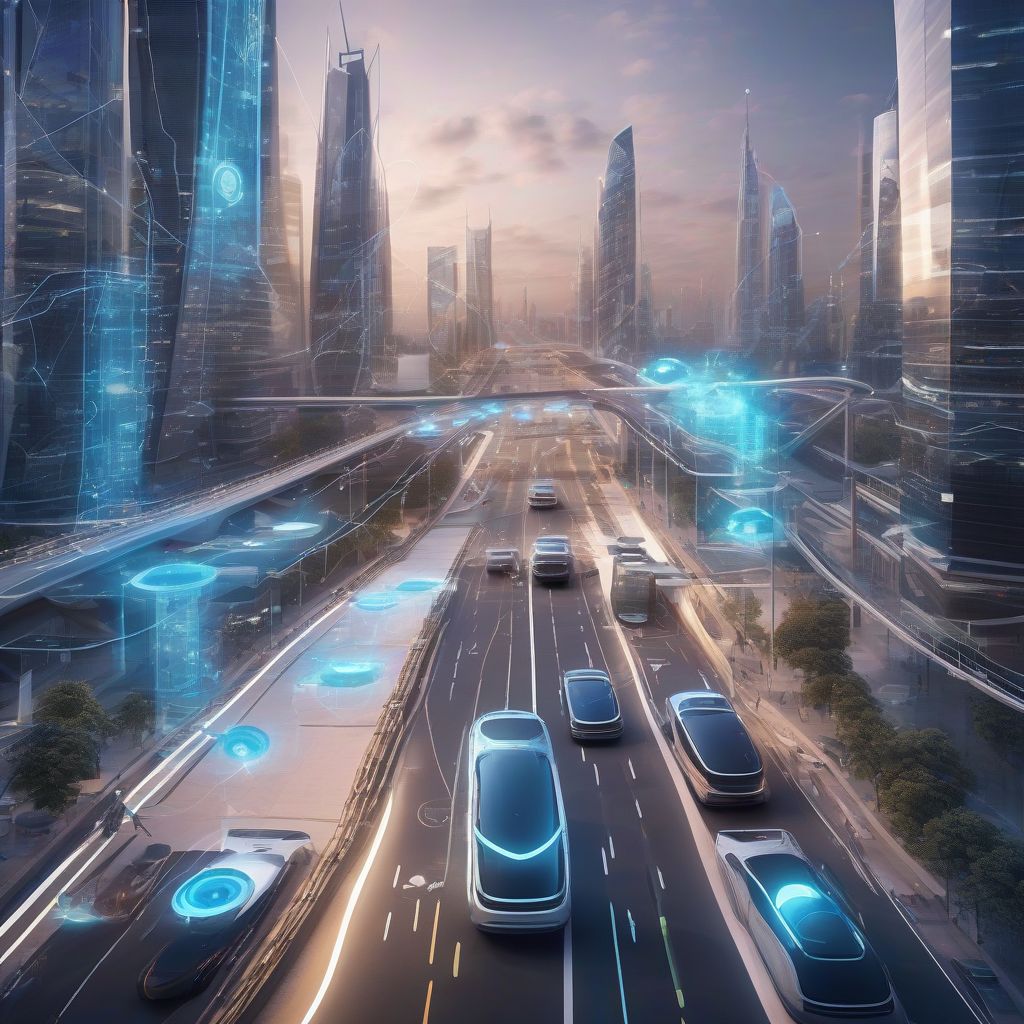Imagine a world where driverless cars navigate bustling city streets with ease, drones deliver packages with pinpoint accuracy, and smart factories operate with unparalleled efficiency. This is the promise of autonomous systems, and 5G is the key to unlocking their full potential. But how exactly does this next-generation wireless technology impact autonomous system performance? Let’s dive in and explore the transformative power of 5G.
Understanding the 5G Advantage
5G isn’t just a simple upgrade from 4G; it’s a paradigm shift in wireless communication. This revolutionary technology boasts three key advantages that are poised to revolutionize the landscape of autonomous systems:
1. Blazing Fast Speeds: Accelerating Data Transmission
5G’s enhanced speed is paramount. We’re talking about download speeds up to 20 times faster than 4G, reaching a theoretical maximum of 20 gigabits per second. This lightning-fast data transmission is crucial for autonomous systems that demand real-time information processing.
Consider a self-driving car. To navigate safely, it needs to instantly process massive amounts of data from sensors, cameras, and GPS systems. 5G’s low latency ensures that this data is transmitted and analyzed with virtually no delay, enabling the vehicle to make split-second decisions, avoid collisions, and navigate complex environments with greater precision.
2. Ultra-Low Latency: Enabling Real-Time Responsiveness
Latency, the delay between a request and a response, is a critical factor in autonomous system performance. 5G dramatically reduces latency to a mere 1 millisecond, compared to 4G’s 50 milliseconds. This near-instantaneous responsiveness is crucial for applications where even the slightest delay can be detrimental.
For instance, in remote surgery, surgeons rely on robotic arms controlled over a network. 5G’s ultra-low latency enables surgeons to perform delicate procedures with greater precision and control, minimizing the risk of complications.
3. Increased Capacity: Connecting a World of Devices
The Internet of Things (IoT) is expanding rapidly, and autonomous systems are a key driver of this growth. 5G’s increased capacity is essential for supporting this interconnected future. With the ability to connect up to a million devices per square kilometer, 5G ensures seamless communication between autonomous systems, even in densely populated areas.
This enhanced capacity is particularly important for applications like smart cities, where traffic lights, surveillance cameras, and autonomous vehicles need to communicate with each other to optimize traffic flow, enhance safety, and improve overall efficiency.
 5G-Enabled City
5G-Enabled City
5G in Action: Transforming Industries through Autonomous Systems
The impact of 5G on autonomous systems extends across various industries, revolutionizing operations, and unlocking new possibilities:
1. Transportation: Paving the Way for Autonomous Vehicles
The automotive industry is at the forefront of autonomous vehicle development, and 5G is a game-changer. With its high speed and low latency, 5G enables vehicles to communicate with each other (V2V), with infrastructure (V2I), and with pedestrians (V2P), creating a safer and more efficient transportation ecosystem.
5G also enables advanced driver-assistance systems (ADAS) like adaptive cruise control, lane-keeping assist, and automatic emergency braking, paving the way for fully autonomous vehicles in the near future.
2. Manufacturing: Powering the Smart Factories of Tomorrow
5G is transforming manufacturing by enabling the Industrial Internet of Things (IIoT), where machines, sensors, and robots communicate and collaborate seamlessly. This interconnectedness facilitates predictive maintenance, real-time process optimization, and remote monitoring, leading to increased efficiency, reduced downtime, and improved product quality.
Imagine a factory floor where robots work alongside human operators, guided by real-time data from sensors and AI-powered analytics. 5G makes this vision a reality, unlocking unprecedented levels of automation and productivity.
3. Healthcare: Advancing Telemedicine and Remote Surgery
5G is poised to revolutionize healthcare by enabling remote patient monitoring, telemedicine consultations, and even remote surgery. With its high bandwidth and low latency, 5G enables healthcare providers to deliver high-quality care to patients in remote areas, bridge the gap between specialists and patients, and improve access to life-saving medical services.
4. Agriculture: Cultivating Precision Farming Practices
5G is transforming agriculture by enabling precision farming practices that optimize crop yields and reduce environmental impact. Drones equipped with sensors and cameras can collect real-time data on soil conditions, crop health, and pest infestations. This data is then analyzed using AI algorithms, providing farmers with actionable insights to make informed decisions about irrigation, fertilization, and pest control.
Overcoming Challenges and Embracing the 5G Future
While the potential of 5G for autonomous systems is immense, there are challenges to overcome:
1. Infrastructure Deployment: Widespread 5G deployment is essential to realize its full benefits for autonomous systems. This requires significant investment from governments and telecommunication companies.
2. Security Concerns: As with any interconnected system, security is paramount. Robust security measures are crucial to protect autonomous systems from cyberattacks and ensure data integrity.
3. Regulatory Frameworks: Clear regulatory frameworks are needed to govern the deployment and operation of autonomous systems, addressing liability issues, safety standards, and ethical considerations.
Despite these challenges, the future of 5G and autonomous systems is bright. As technology continues to evolve and mature, we can expect to see even more innovative applications emerge across various industries.
Conclusion: Embracing the Autonomous Revolution
5G is not merely an incremental upgrade but a transformative technology that is set to revolutionize the way we live, work, and interact with the world around us. Its impact on autonomous system performance is undeniable, paving the way for a future where driverless cars, smart factories, and interconnected cities are the norm. As we embrace this autonomous revolution, we can look forward to a more efficient, sustainable, and interconnected future.
Are you ready to harness the power of 5G for your business or industry? The future is waiting.
[amazon bestseller=”5G Technology”]
